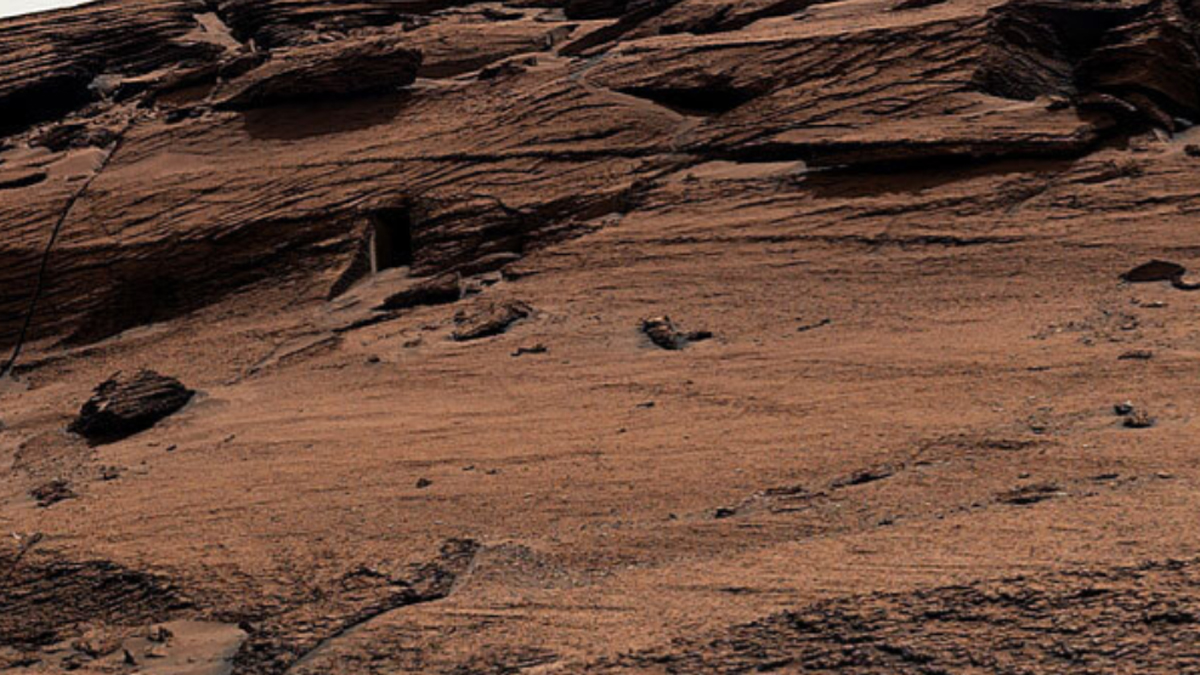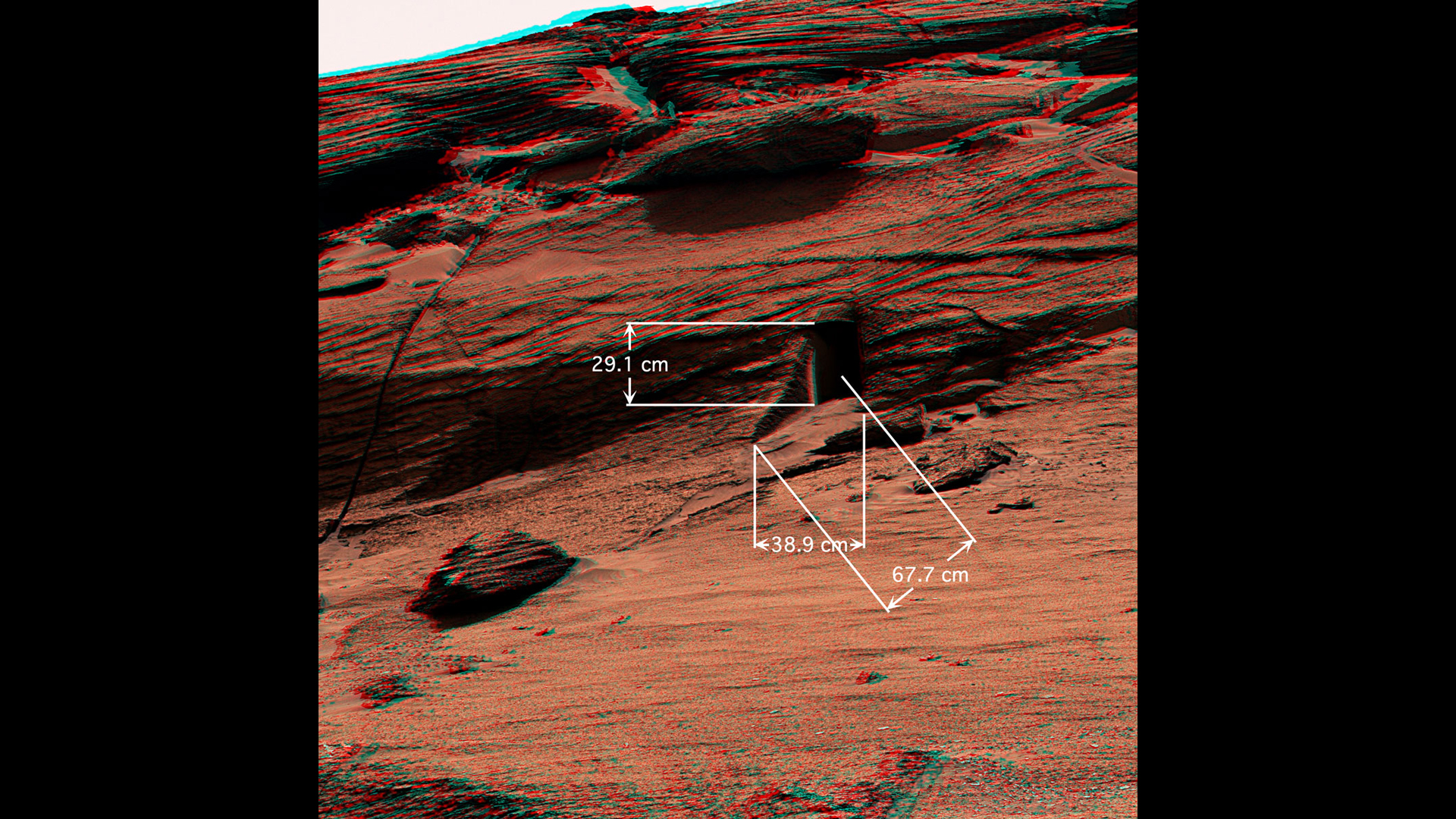'Dog door' on Mars found by Curiosity rover is a rocky 'doorway into the ancient past,' NASA says
Yes, the Mars "door" is just a rock. But the Curiosity rover's find is a boon for science, too.

Over the past week, the internet has been wild over images of what appears as a doorway cut into a cliff on Mars.
But scientists behind NASA's Curiosity rover, which snapped the pictures earlier this month, said that while the strange door-like feature on Mars provides a fascinating "doorway into the ancient past," it is perfectly natural rather than the work of some aliens in hiding.
The Curiosity rover found the Mars "door" on May 7 while imaging a mound known as the East Cliffs in the Gale Crater, which the rover has been exploring since its landing in 2012. The rover used its Mastcam instrument to take the image of the strange fissure, which is only 12 inches (30 centimeters) tall and 16 inches (40 centimeters) wide, NASA said in a statement. Clearly, humans would have difficulties entering the cliff through this "door," which is why the NASA team dubbed it only the "dog door."
Related: Mars Illusion Photos: The 'Face on Mars' and Other Martian Tricks


"These kinds of open fractures are common in bedrock, both on Earth and on Mars," NASA said in the statement.
Commenting on the internet frenzy surrounding the discovery of the "door", the Curiosity team said on Twitter that the tendency of a human brain to look for patterns that make sense in ambiguous shapes (called "pareidolia"), is behind the internet sensation.
"Sure, it may look like a tiny door, but really, it's a natural geologic feature! It may just *look* like a door because your mind is trying to make sense of the unknown," the Curiosity team said in a Twitter thread. "There are several linear fractures in the mound, but in this spot, several fractures intersect, which allows the rock to break at such sharp angles."
Breaking space news, the latest updates on rocket launches, skywatching events and more!
The team, however, added that while they don't expect a sensational discovery of an alien civilization behind the dog door, the odd crack will provide interesting opportunities for new science.
"In a less literal sense, my science team is interested in these rocks as a "door" to the ancient past," the team said.
Considering the recent renewal of interest in Unidentified Flying Objects, it is likely that not everybody will be satisfied with this explanation.
Follow Tereza Pultarova on Twitter @TerezaPultarova. Follow us on Twitter @Spacedotcom and on Facebook.

Tereza is a London-based science and technology journalist, aspiring fiction writer and amateur gymnast. She worked as a reporter at the Engineering and Technology magazine, freelanced for a range of publications including Live Science, Space.com, Professional Engineering, Via Satellite and Space News and served as a maternity cover science editor at the European Space Agency.
